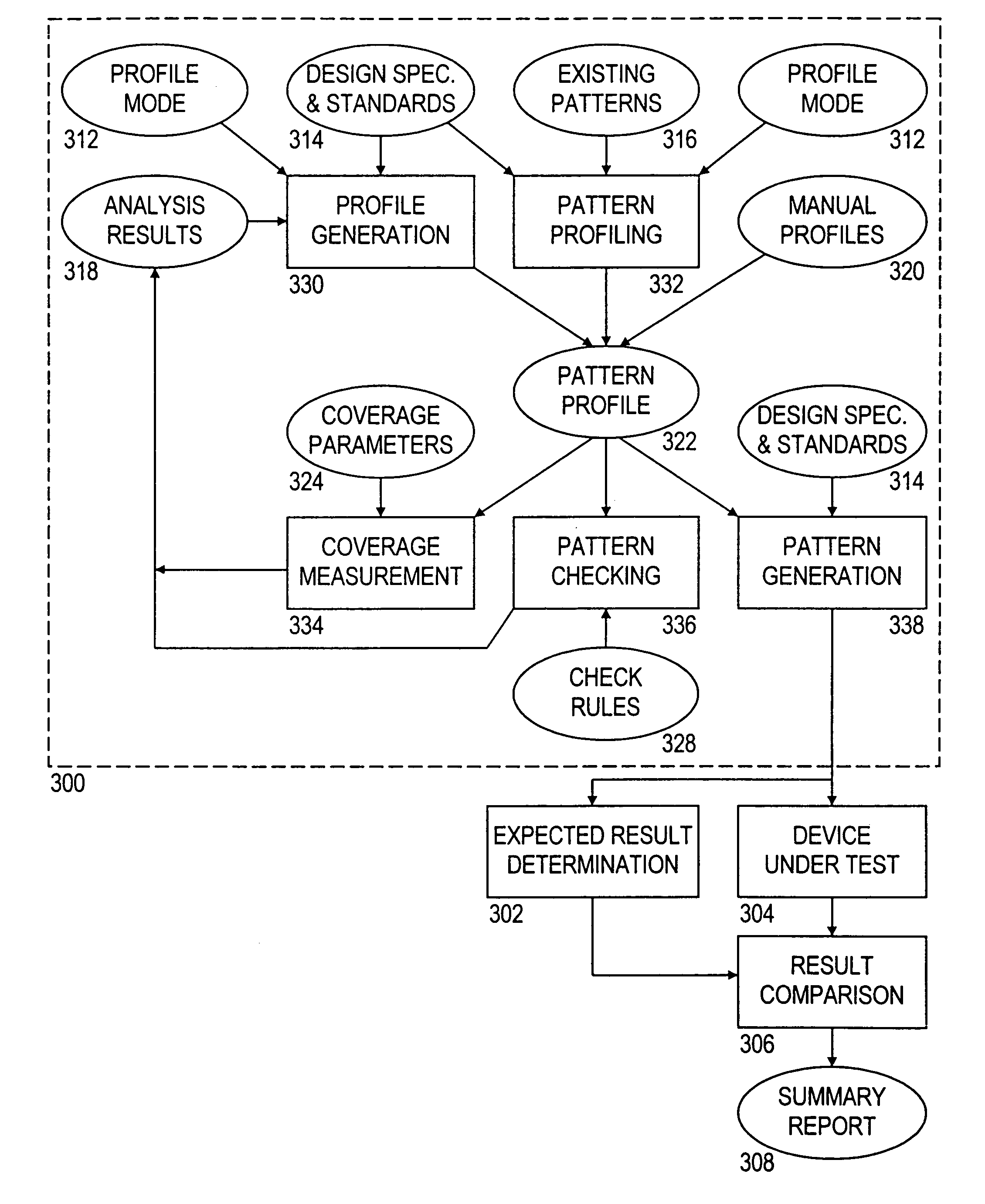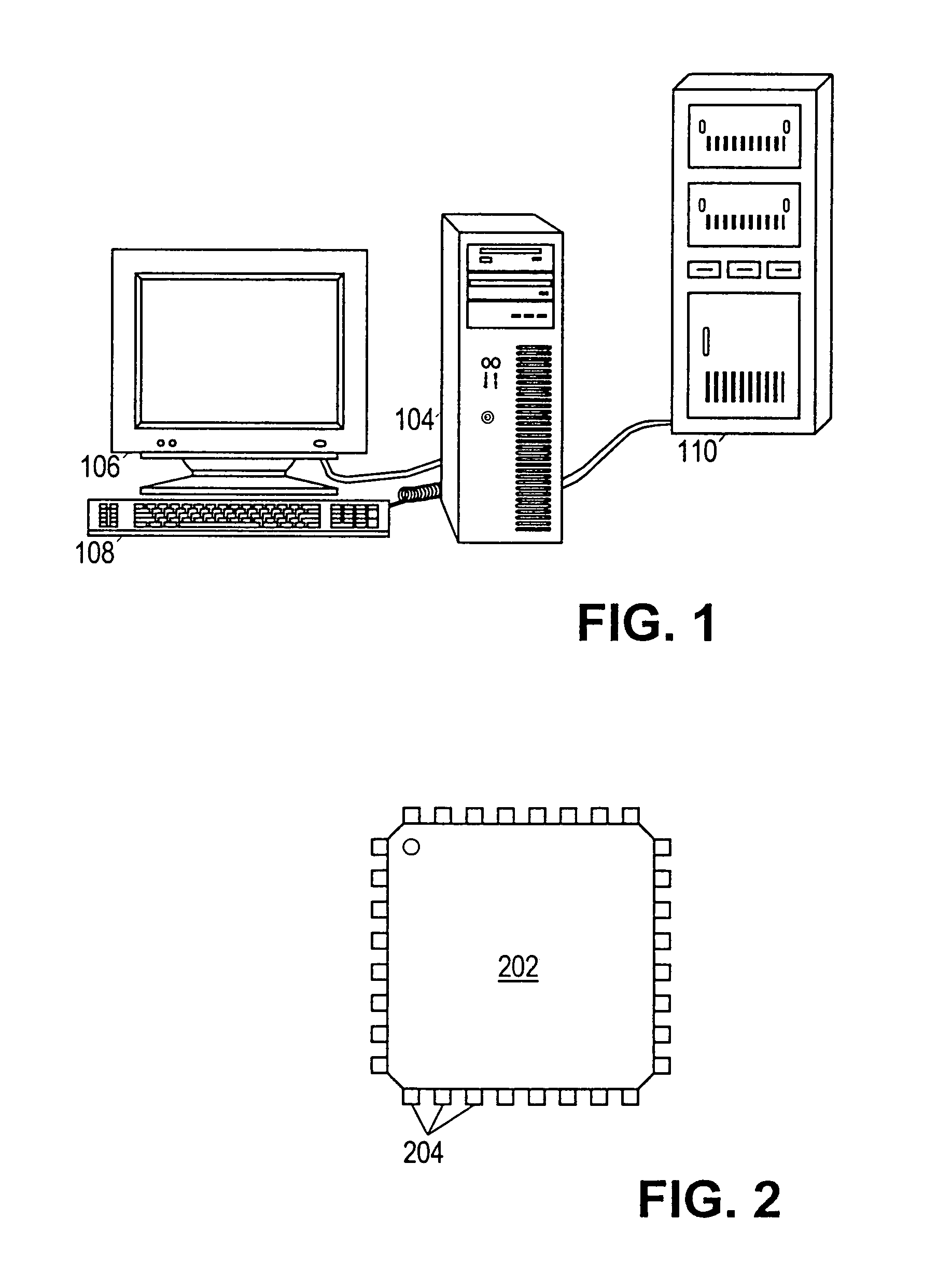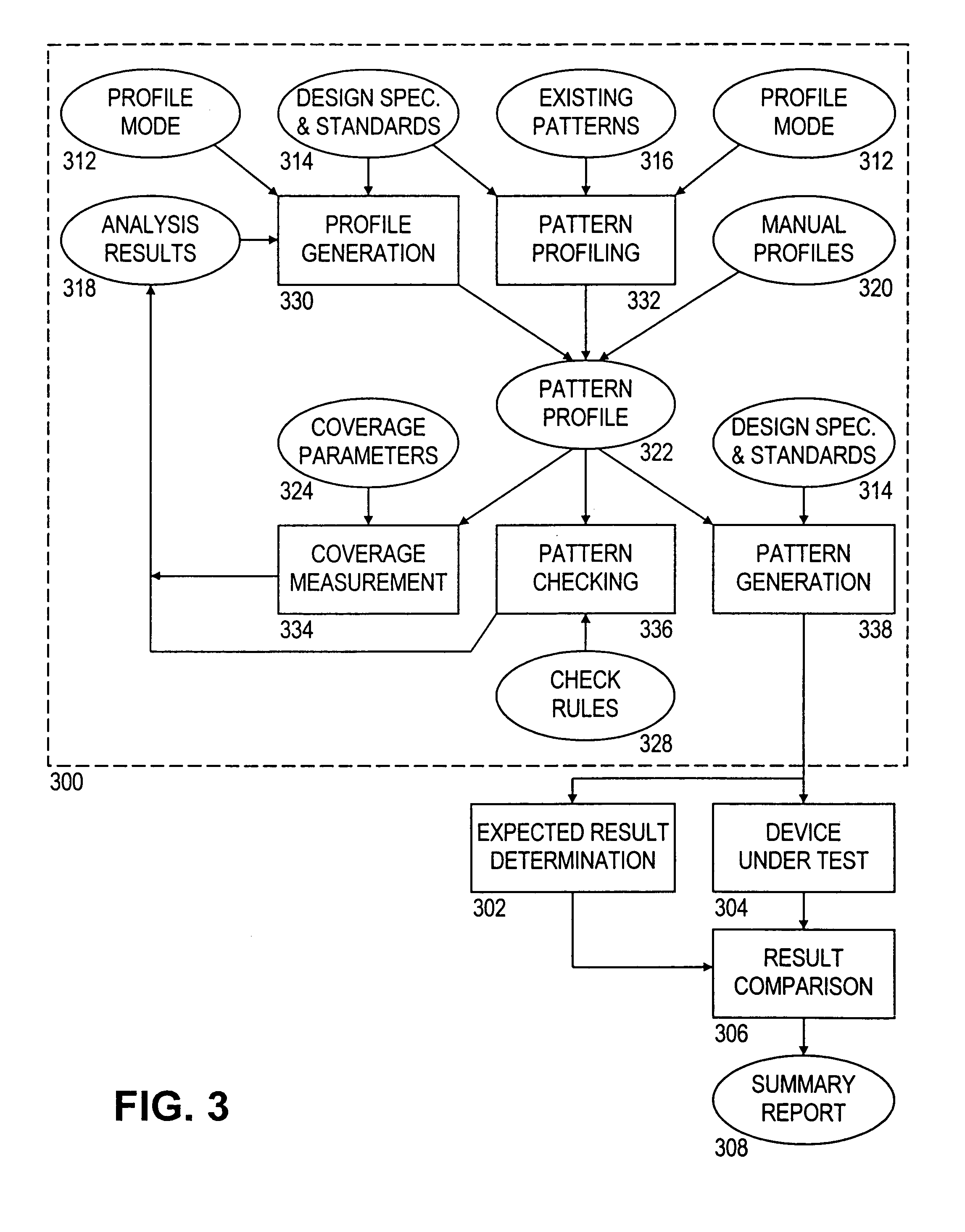Functional-pattern management system for device verification
a technology of functional pattern management and device verification, applied in error detection/correction, instruments, computing, etc., can solve the problems of large verification challenge, almost always impractical, and huge expense, and achieve the effect of better understanding by users and better coverag
- Summary
- Abstract
- Description
- Claims
- Application Information
AI Technical Summary
Benefits of technology
Problems solved by technology
Method used
Image
Examples
Embodiment Construction
[0021]Turning now to the figures, FIG. 1 shows a system for device verification. The system comprises a workstation 104 having a monitor 106 and an input device 108. Workstation 104 is coupled to a device emulator 110 which may be configured to simulate the operation of millions of logic gates and registers. Device emulator 110 may be further configured to run test patterns on an emulated device in response to instructions from workstation 104. Alternatively, device emulator 110 may be replaced by a device tester configured to run test patterns on an actual device. Benefits of emulation include access to internal registers that may not be “visible” from outside an actual device. However, emulation tends to require more time and computer power than testing on a prototype. This difficulty is sometimes addressed by simulating only portions of the device, and if the portion is small enough, the simulations may be carried out by workstation 104.
[0022]FIG. 2 shows an exemplary device 202 ...
PUM
 Login to View More
Login to View More Abstract
Description
Claims
Application Information
 Login to View More
Login to View More - R&D
- Intellectual Property
- Life Sciences
- Materials
- Tech Scout
- Unparalleled Data Quality
- Higher Quality Content
- 60% Fewer Hallucinations
Browse by: Latest US Patents, China's latest patents, Technical Efficacy Thesaurus, Application Domain, Technology Topic, Popular Technical Reports.
© 2025 PatSnap. All rights reserved.Legal|Privacy policy|Modern Slavery Act Transparency Statement|Sitemap|About US| Contact US: help@patsnap.com



